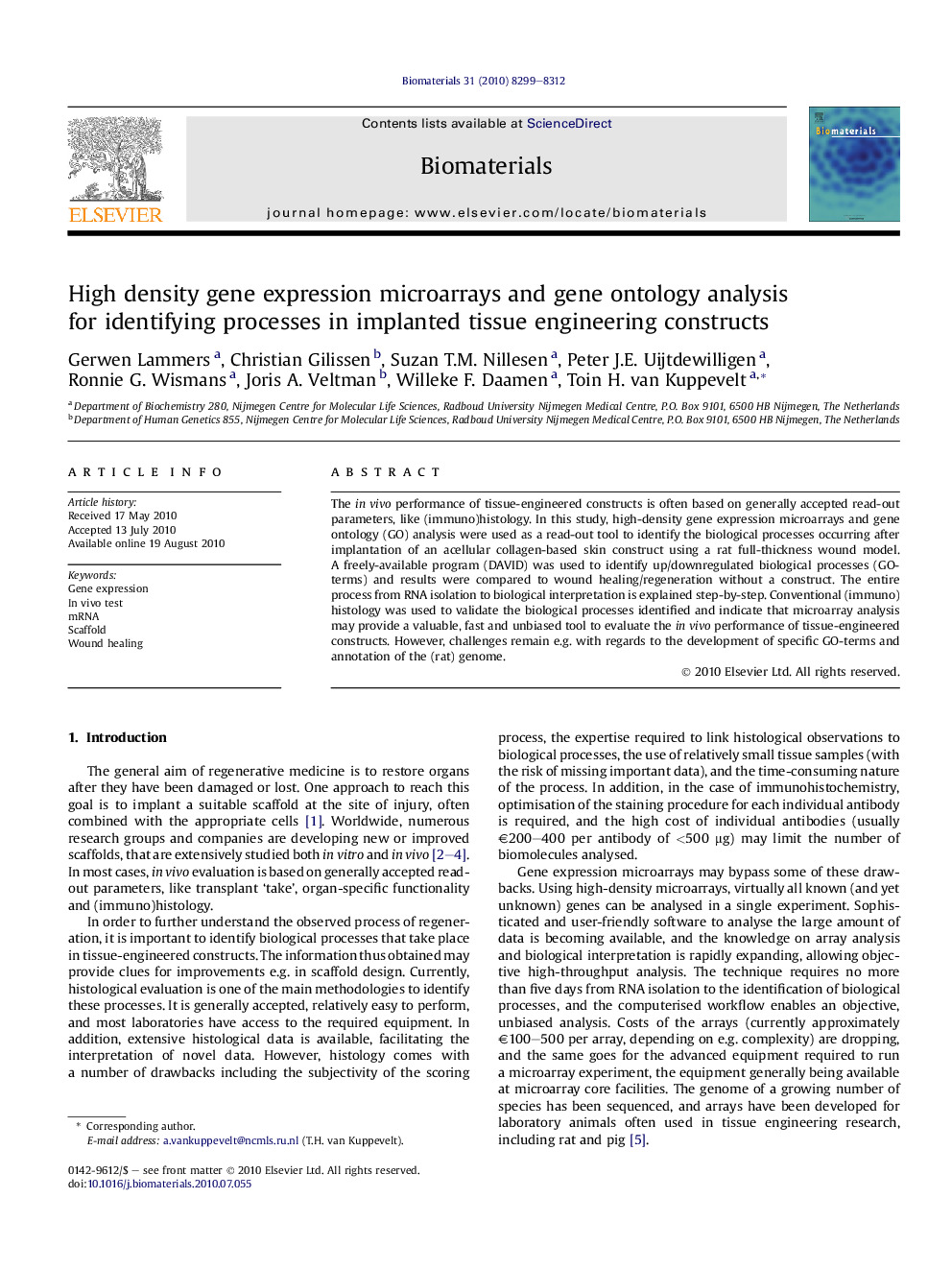| Article ID | Journal | Published Year | Pages | File Type |
|---|---|---|---|---|
| 7951 | Biomaterials | 2010 | 14 Pages |
The in vivo performance of tissue-engineered constructs is often based on generally accepted read-out parameters, like (immuno)histology. In this study, high-density gene expression microarrays and gene ontology (GO) analysis were used as a read-out tool to identify the biological processes occurring after implantation of an acellular collagen-based skin construct using a rat full-thickness wound model. A freely-available program (DAVID) was used to identify up/downregulated biological processes (GO-terms) and results were compared to wound healing/regeneration without a construct. The entire process from RNA isolation to biological interpretation is explained step-by-step. Conventional (immuno)histology was used to validate the biological processes identified and indicate that microarray analysis may provide a valuable, fast and unbiased tool to evaluate the in vivo performance of tissue-engineered constructs. However, challenges remain e.g. with regards to the development of specific GO-terms and annotation of the (rat) genome.
